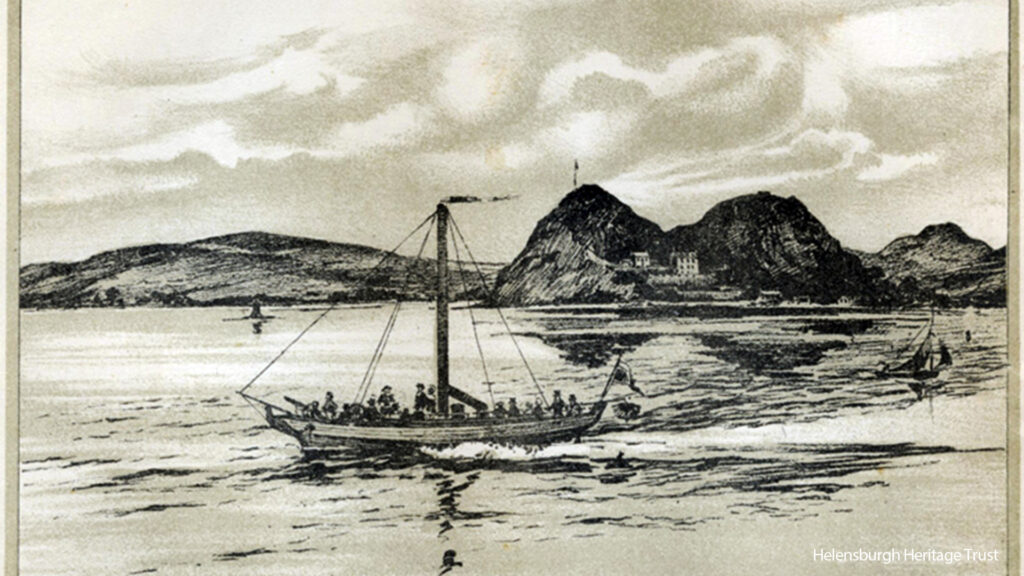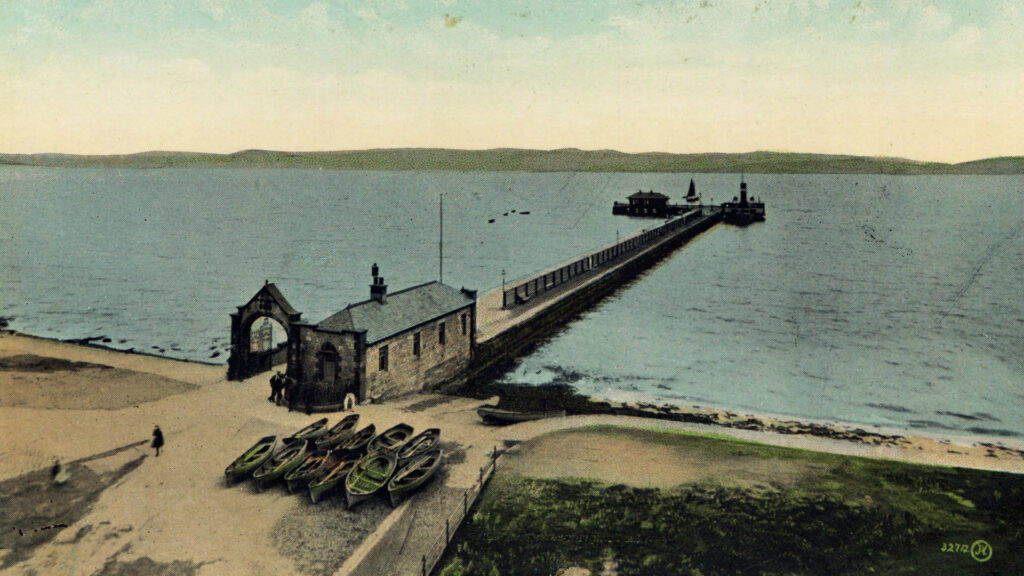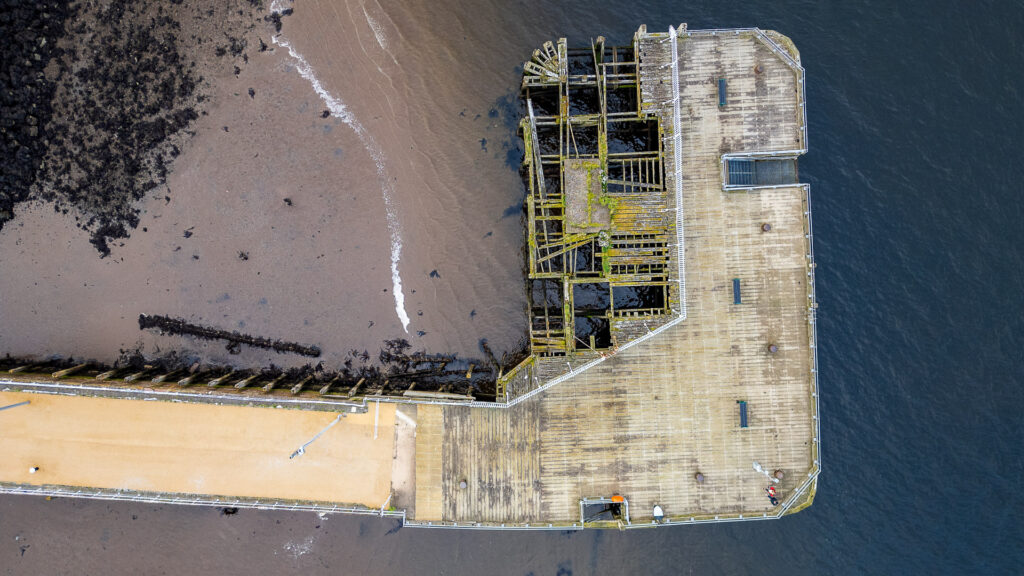1900s
Whilst the main trade of the paddle steamers was passenger travel, the steamers also acted as tenders for the transatlantic liners berthed at the Tail of the Bank, the deep water anchorage north of Greenock.
At the turn of the 20th Century, Cunard Line steamships would often stop off to pick up emigrants from the Clyde on their journey from Liverpool to America, and other ships such as those of the Canadian Pacific Line were regular visitors. Some records exist of people being picked up by tender from Helensburgh Pier to reach the transatlantic steamers – Margaret Gillatt Orr Allan left from Helensburgh Pier on 14 February 1925 by tender to join the Anchor Line ship Cameronia, bound for New York, where she recalled “The whole town had gathered to see me off.” Margaret was awarded an MBE and finished her career as Head of Documents at the UN in New York, retiring in 1965.

1910 – The Bandstand with the Pier in the background, courtesy of Helensburgh Heritage Trust
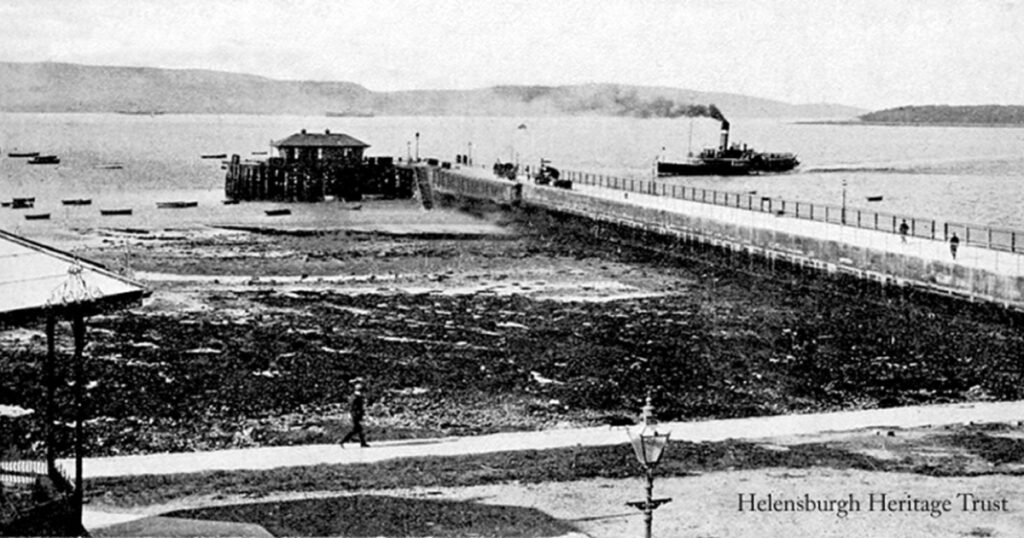
1928 – A Steamer (possibly the Lucy Ashton) approaching the Pier, courtesy of Helensburgh Heritage Trust
The majority of the paddlesteamer visits moved to the facility at Craigendoran, but it closed in 1973 due to declining traffic and is now in ruins – its construction method was not as robust as that of Helensburgh Pier.
During the peak era of tourism along the Clyde in the late 19th century and early 20th century, these piers were of vital importance in the economic and social development of coastal and island communities in the west of Scotland. Of around 60 piers of various sizes along the Clyde, less than ten now survive in commercial use. (HES)
There were seven fleets of small boats that offered excursions from Helensburgh Pier in the early 1900s. In 1909 it cost 6d per hour or 2/6 per day to hire a boat. As well as rowing boats available to hire there was an annual New Year’s Day Swim dating back to at least 1910. As well as traditional sea-side pursuits such as sand castle building competitions and donkey rides, facilities include the Bandstand (1902), the Putting Green (1925), and the outdoor Swimming Pool which was built in 1929. This was a gift to the town from Bailie Andrew Buchanan, later provost (1930-36). It was designed by Robert Wemyss and opened at the pierhead on 9 July 1929 and was hugely popular.
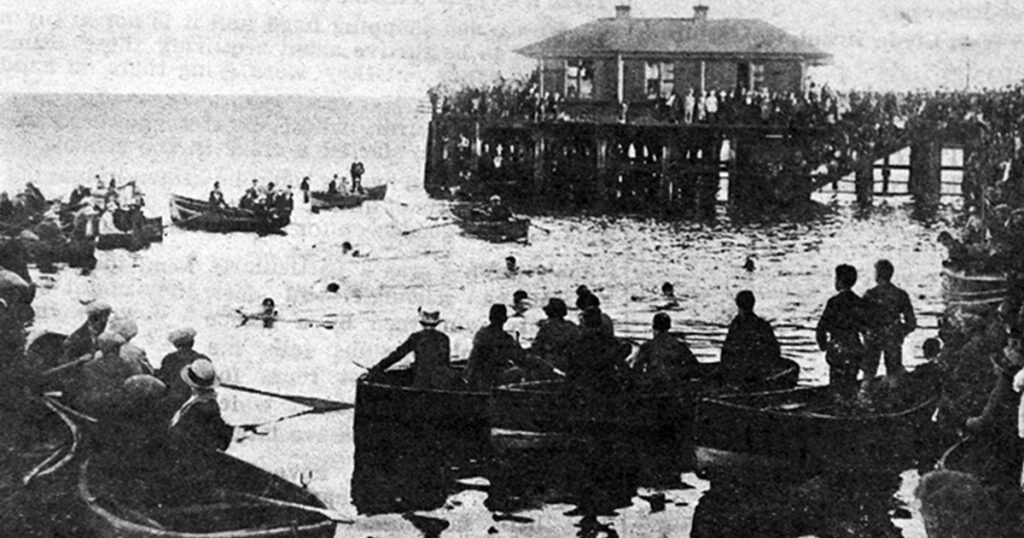
Swimming at the Pier, image couresty of Helensburgh Heritage Trust.
In 1951, Helensburgh Sailing Club was established by several of the people who had their boats moored off the Pier, and raced in a transit line from the end of the Pier, with the courses worked out so as not to inconvenience the steamers. The Town Council allowed the waiting room at the end of the Pier to be used as a Clubroom for several years until the Club was established.
Most of the dinghies were kept at the moorings beside the keelboats and each gale used to capsize some and occasionally caused damage. On these occasions the harassed boat-owners used to keep vigil from the shelter of the clubroom, and in later years the army landing craft even provided a searchlight at night so they could see their boats sinking!
Steamers stopped calling at Helensburgh Pier on a regular basis in 1952 when road transport overtook waterborne transport as the preferred method of travel. However, smaller vessels such as the Kenilworth continued to run ferry services to Gourock and Kilcreggan alongside local pleasure cruises.
Peter and George Mundie ran a boat hire from the Pier in the 1950s and “over the years they made many fine rescues of capsized dinghy crews which gave added interest to their passengers who had only expected a ‘trip around the bay’.“
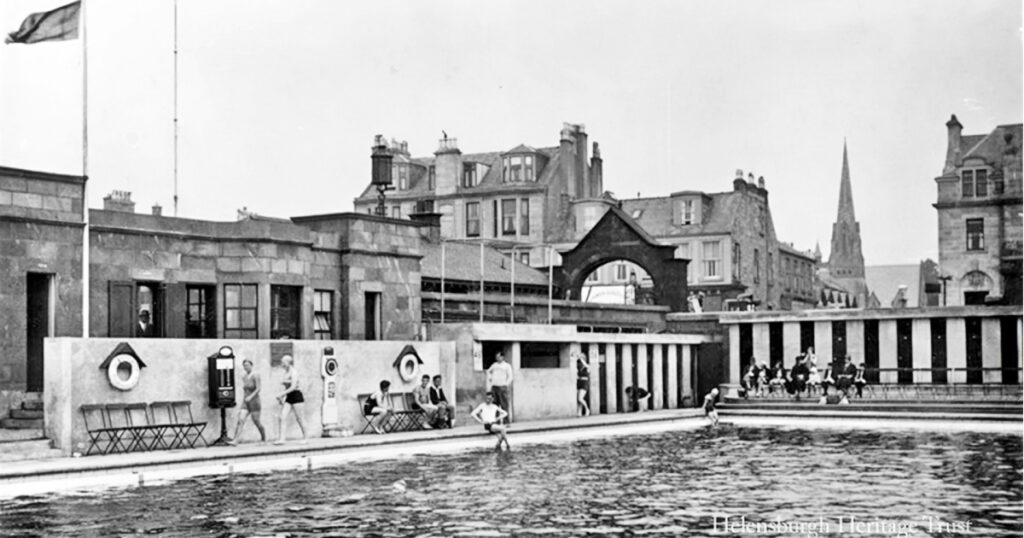
1959 – The outdoor swimming pool, courtesy of Helensburgh Heritage Trust

Coaches at the Pier, courtesy of Helensburgh Heritage Trust
By 1962 the Pier clubhouse, following a fire, had gained a new upstairs room with a balcony for the race officers and timekeepers. The flagpole was the jackstaff from the battleship King George V. HSC built their own facility on ground at Dalmore opening in 1968, but still used the new Navy flagpole at the pier for racing flags – this flagpole was erected to hoist signals denoting closure of the restricted channel for submarine movements. The Pier was also useful during frostbite series racing for club officers to use their car headlamps to illuminate the sail number of competing boats as darkness drew in. The Pier clubhouse was finally destroyed by fire in 1971.
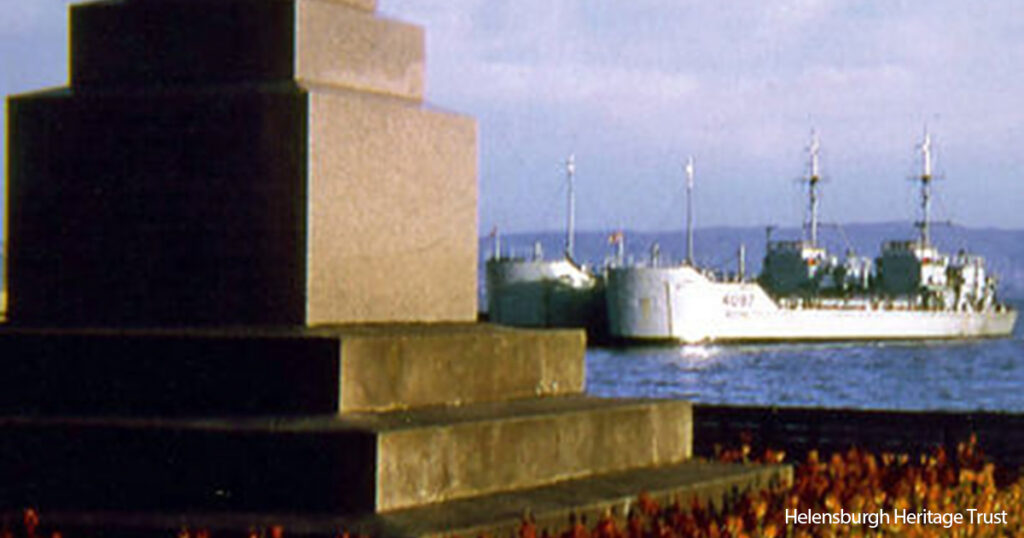
Landing Craft at the Pier in 1965, courtesy of Helensburgh Heritage Trust.
A fleet of tank landing craft were based at Helensburgh Pier in the 1950s and ‘60s, which serviced the rocket range between South Uist and St Kilda in the Outer Hebrides.
From 1968-73 there was extensive land reclamation to create a car park to the east of the pier, which filled in the East esplanade. In 1965 the Archway was removed, and in 1979 the pier was dredged, which allowed PS Waverley to berth for regular summer excursions. The outdoor pool closed in 1976 and was demolished when an indoor swimming pool was opened soon after.

